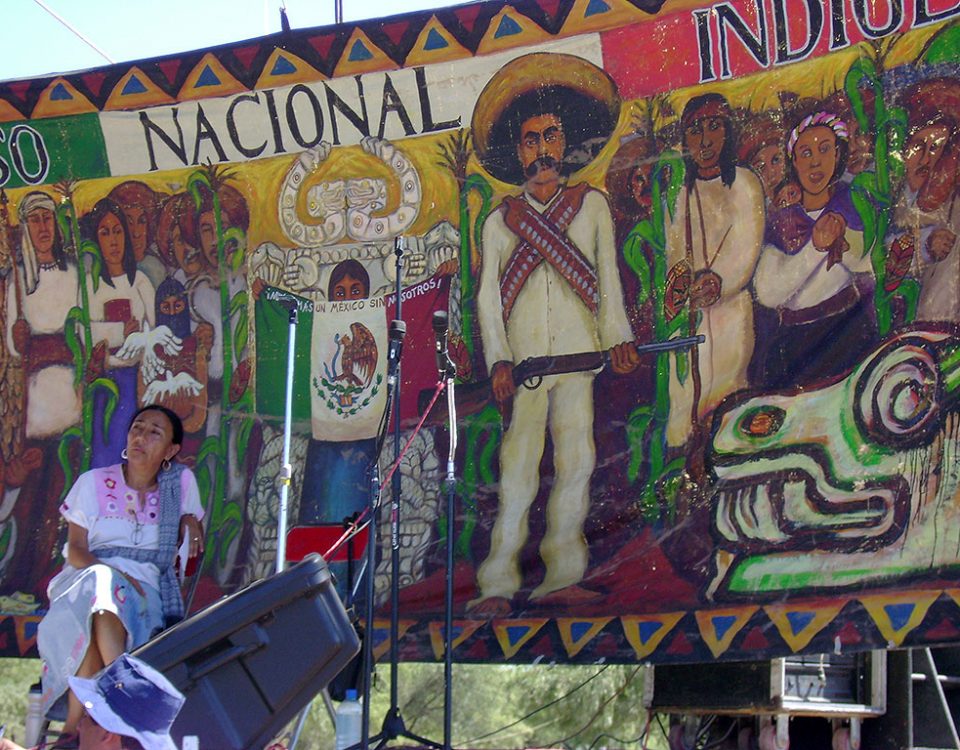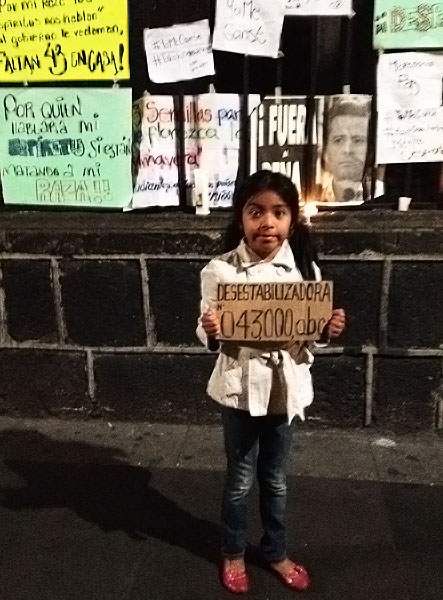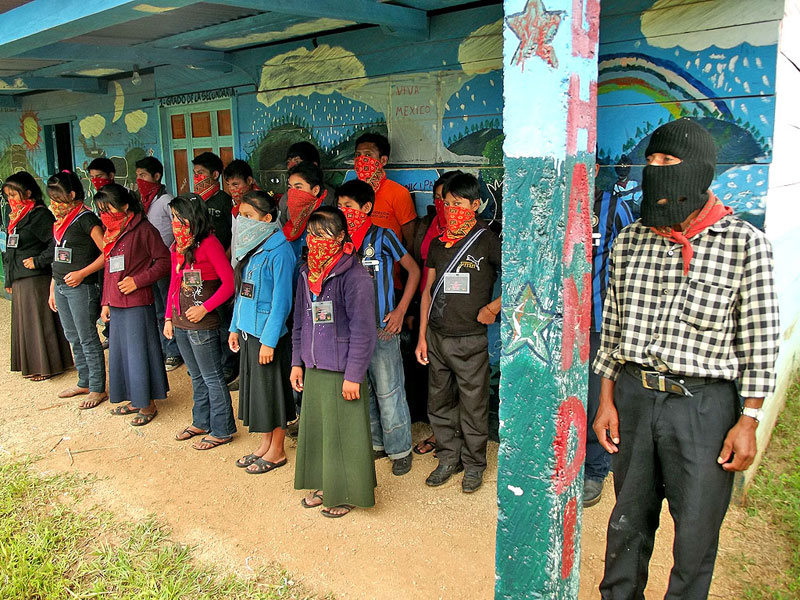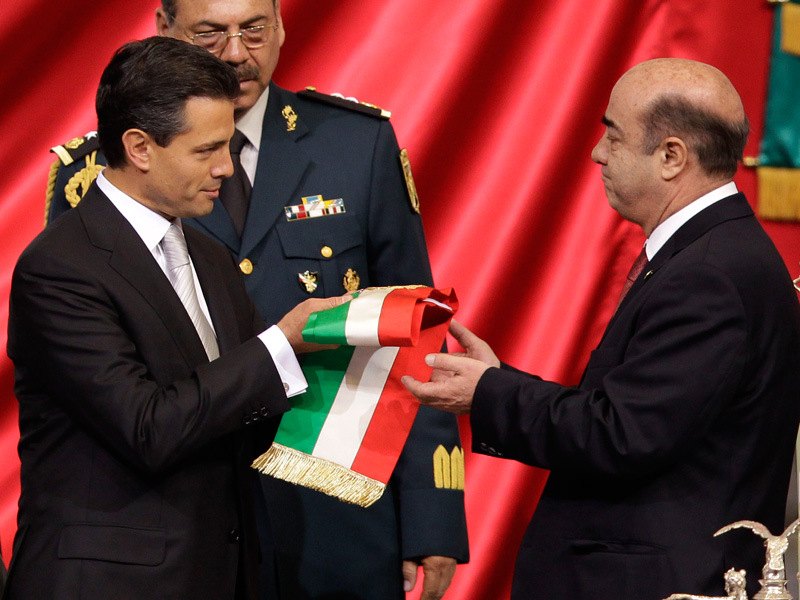2008
01/01/2009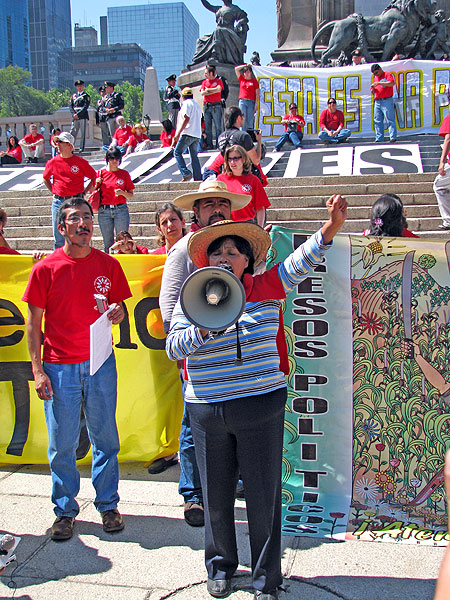
ANALYSIS: Mexico – human rights and security, an impossible puzzle?
30/04/2009At the national level, 2008 was marked by a general increase in the prices of basic goods, gasoline, and electricity. These price-increases were exacerbated by the total opening of the agrofishery industry as stipulated by the North American Free-Trade Agreement (NAFTA), which was signed by México, the United States, and Canada in 1994. This move nullified existing tariffs on the importation of basic foods such as beans and corn, as well as dairy products and oil crops, and as such was seen by Mexican campesinos, the political opposition, and various academics as the coup de grace of the Mexican countryside. It is estimated that the absolute number of Mexican living in extreme poverty increased by 7 million, to reach 20% of the total Mexican population.
 As social discontent grew, the federal government maintained a tendency to resort to an “iron fist” through its increasing militarization of the country as related to the drug-trade and organized crime. In any case, despite that 45,000 troops had been deployed on a daily basis, the violence attributed to criminal networks did not markedly decrease; some 5,400, indeed, were killed during this time. Instead, an increased tendency to denounce human-rights violations by the military and to criminalize social protest was observed.
As social discontent grew, the federal government maintained a tendency to resort to an “iron fist” through its increasing militarization of the country as related to the drug-trade and organized crime. In any case, despite that 45,000 troops had been deployed on a daily basis, the violence attributed to criminal networks did not markedly decrease; some 5,400, indeed, were killed during this time. Instead, an increased tendency to denounce human-rights violations by the military and to criminalize social protest was observed.
In this sense, in March, the approval of a penal reform, which included such improvements as oral trials and the presumption of innocence for the accused, was questioned for the doors it opened toward legalizing the said criminalization of protest—for example, with regard to pre-trial detentions.
Another reform that caused much controversy and that mobilized a number of social groups in 2008 were the energy reforms proposed by Felipe Calderón in April. This initiative sought to re-invigorate Mexico’s oil sector, the primary source of income in the country, by providing the state-owned Pemex with greater funds.
The National Democratic Congress led by the Broad Progressive Front (FAP), which groups together the primary left-wing parties (the Party of Revolutionary Democracy, or PRD; the Labor Party, or PT; and Convergence) and former presidential candidate Andrés Manuel López Obrador (AMLO)engaged in non-violent actions intended to prevent what was seen as the intended privatization of Pemex both in Mexico city as in other states of the country.
Within this rather bleak context came as well the closing in April of the Coordination for Dialogue and Negotiation in Chiapas, putatively for “economic reasons” as well as a sense that its continued existence was “unnecessary.” In February, nevertheless, the group Peace and Democracy (which counted in its membership several intellectuals and other public figures) spoke of a “new escalation of the war in Chiapas” and denounced “the instances of pillage, the burning of houses, murders, death-threats, and land-takeovers, which follow one other continuously. These all constitute attempts to strip rebellious communities of their land and territory.”
Starting in the middle of May, the presence of police and military units in indigenous communities in Chiapas increased to levels unseen since the close of the 1990s. The Fray Bartolomé Center for Human Rights denounced “a logic of counter-insurgency” that featured “tactical deployments in territories populated by peoples presenting just social demands” and that “allows the government as well to monitor the response of the populations to such operations.”
Jorge Lofredo, from the Center for the Documentation of Armed Movements, quoted a statement by Subcomandante Marcos in the book Corte de Caja: “It is as though we were in 1993, but differently. Now it is the government that is preparing the assault.” Lofredo later stressed that “although there have been reiterated warnings in regards to military incursions in the Zapatista zone that have not occurred, this could be considered the very execution of the military strategy. Through constant sieges or the threat thereof, they speculate that the continuous reactions of the EZLN and non-governmental organizations will cause them to be discredited or generate indifference, until finally the military incursions succeed.”
In more general terms, the social conflicts seen in the state had to do with resistance to high electricity prices as well as social and economic programs related to transport (e.g., the proposed highway from San Cristóbal de las Casas to Palenque), tourism (“theme parks” in Palenque and the Agua Azul waterfalls), and development (protected natural areas such as Huitepec and the Montes Azules Nature Reserve, as well as mining). It is also worth mentioning that the Tenth Meeting of State Leaders and of the Tuxtla Governmental Mechanism for Dialogue and Agreement took place on 28 June in Villahermosa in the state of Tabasco. The attendees reaffirmed the objectives sought by Plan Panamá, which was renamed “Project Mesoamérica.”
Another organization process, this one that originated in the prisons, began between March and April of this year, when 48 prisoners from 3 prisons in Chiapas engaged in a hunger strike in protest of their having been arbitrarily arrested under false charges in clear violation of their judiciary rights for their social-political activities. Several of them founded the “Voice of Los Llanos” in San Cristóbal de las Casas, while others in the Cintalapa prisonorganized themselves into the “Voice of Amate.” Both were part of the Other Campaign established by the EZLN.The process led to the release of hundreds of prisoners.
Another development unconnected to oppositional groups or organizations occurred on 3 October: an operation taken up by federal and state police left 6 dead (4 of whom were said by locals to have been summarily executed), 17 injured, and 36 arrested in the Miguel Hidalgo ejido located in the municipality of La Trinitaria, Chiapas. Since September, the ejidatarios had occupied the Chicultik ruins that are found near their community with the hopes that the ejido would itself be able to administer the archaeological site. After the Secretary of Government of Chiapas recognized that there had not been an order authorizing eviction, the Chiapas Congress unanimously approved an eviction protocol that allows for the regular use of police forces in such cases.
The International Civil Observation Commission for Human Rights (CCIODH) found the case of Chincultik to have been an example of governmental policy that criminalizes social protest and seeks to cover-up its institutional responsibility by means of resorting to the granting of compensation payments. The Fray Bartolomé Center for Human Rights, for its part, claimed that “There exists a significant risk that the massacre of Chinkultic, like others, go unpunished, and that responsibility for the crime will be found to rest solely with low-ranking public officials.”
In September, the EZLN announced the first Global Festival of Justified Rage, which took place during the final week of December and the first few days of January 2009 in Mexico City and Chiapas. According to the festival’s invitation, “The disappointment in face of the cynicism and incompetence of the traditional political classes has been transforming itself into rage. At times this rage continues with hope for change by means of the usual paths and consequently comes into conflict with immobilizing despair or the tyranny of arbitrary power. Other times, though—often, as often as we smile—rage seeks its own paths: different, other paths. The ‘no’ advanced by such rage not only resists but also begins to propose.”

